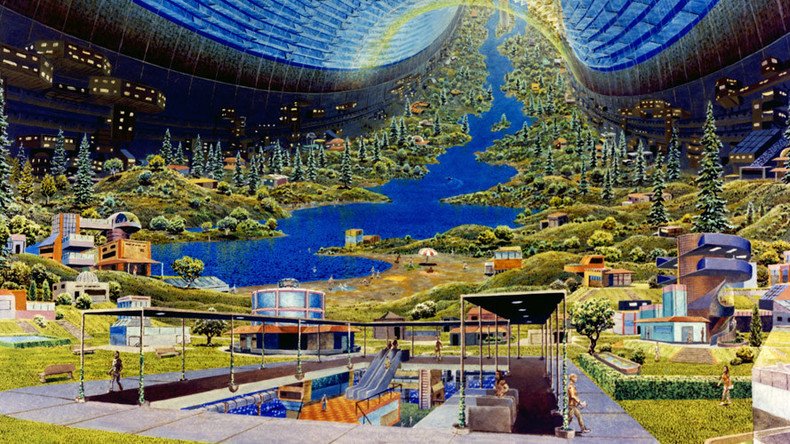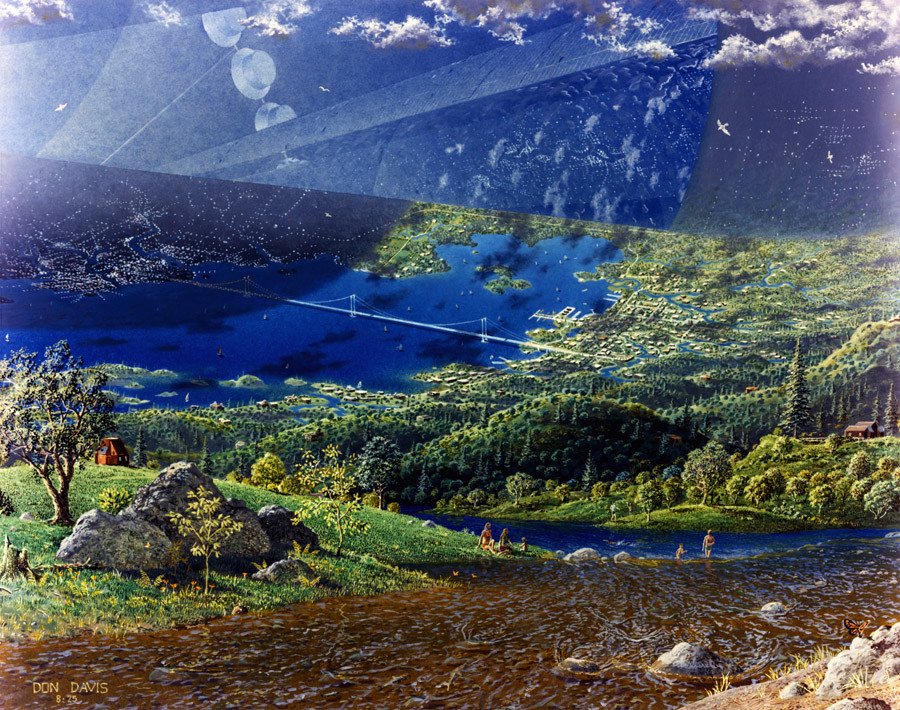To Infinity: How NASA envisioned life aboard giant spaceships back in 1970s (PICTURES)

Ever wondered what life would be like for humans on a space colony? Well NASA certainly did back in the 1970s - and it turns out they were rather optimistic.
With the help of Princeton physicist Gerard O’Neill, NASA’s Ames Research Center and Stanford University conducted three space colony summer studies back in the day and came up with some imaginative renderings of brave new worlds.
The project resulted in a series of incredible artistic impressions of communities thriving in man-made mega civilizations.

The key word in all of this: cylindrical. Vast, lush organic habitations, resembling a giant Kibbutz, are created inside space stations of epic proportions, the cylindrical arms of which support green, vibrant and surprisingly earth-like environments.
There are lakes, forests, parks, mountains, crop fields, clouds, traditional suburban neighborhoods, churches and towns. If the pictures are anything to go by, picnics and barbeques are de rigour for the 10,000 inhabitants who, it was envisioned, would move there.
READ MORE: Dummies test rapid 'splashdown' landings for NASA’s Mars missions (PHOTO, VIDEO)


A major part of this post-Apollo program dream was the deployment and use of numerous, massive satellites to help support these space communities. Many of these pictures first appeared in O’Neill’s book The High Frontier: Human Colonies in Space from 1976.
Of course some 40 years on from these images being produced, we are not much closer to creating these utopian space societies.

If the 1968 masterpiece 2001: A Space Odyssey was thinking big, it’s fair to say we’ve adjusted our expectations since. Even Matt Damon in 2015’s The Martian didn’t get to enjoy much luxury on the Red Planet. He grew potatoes using the poo of astronauts as fertilizer.













